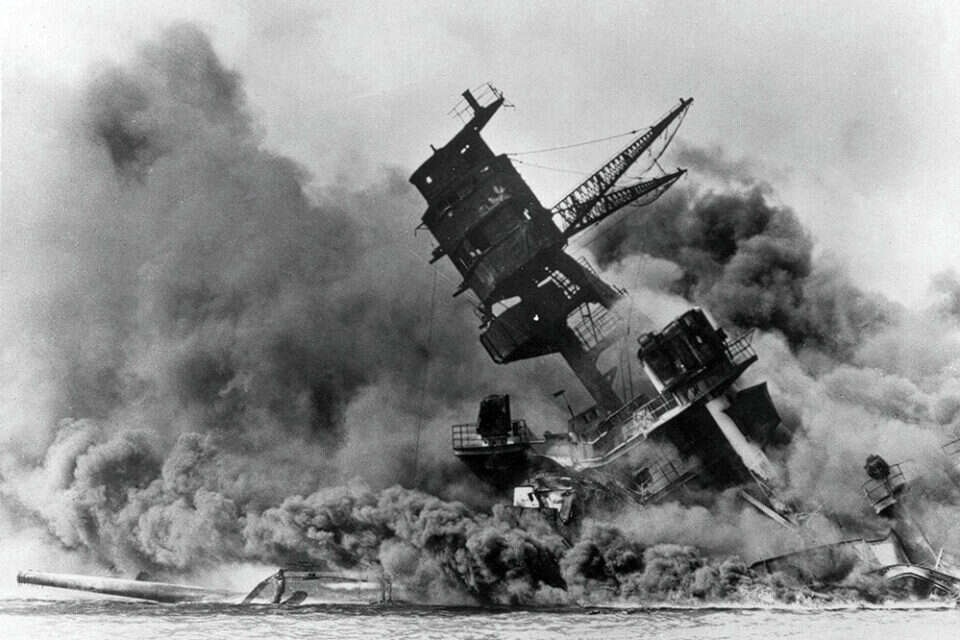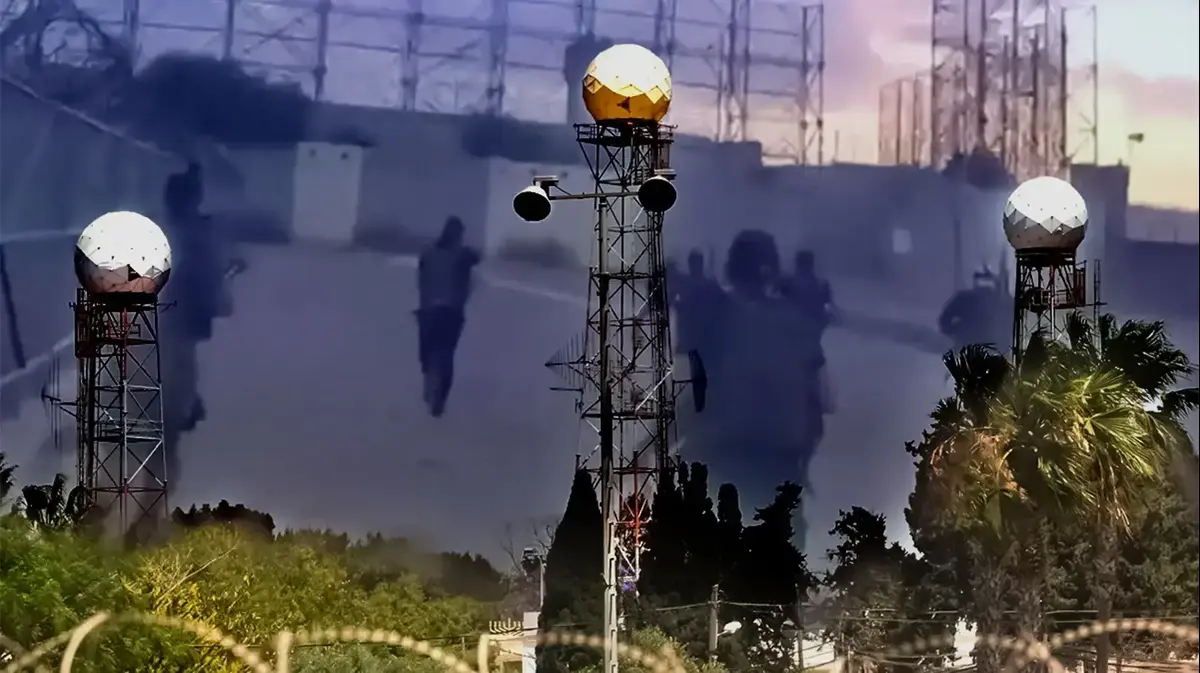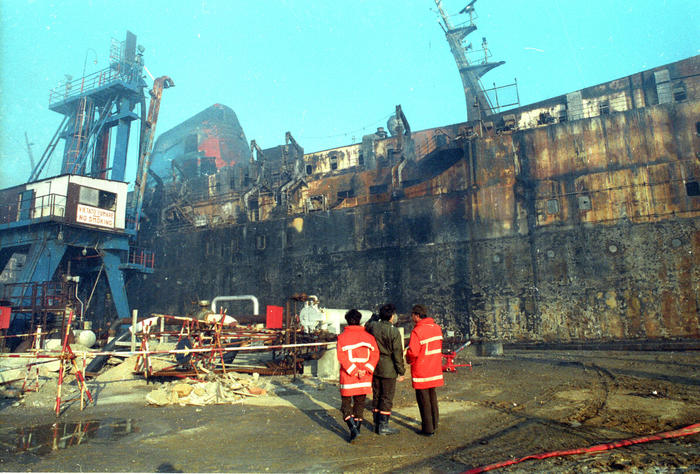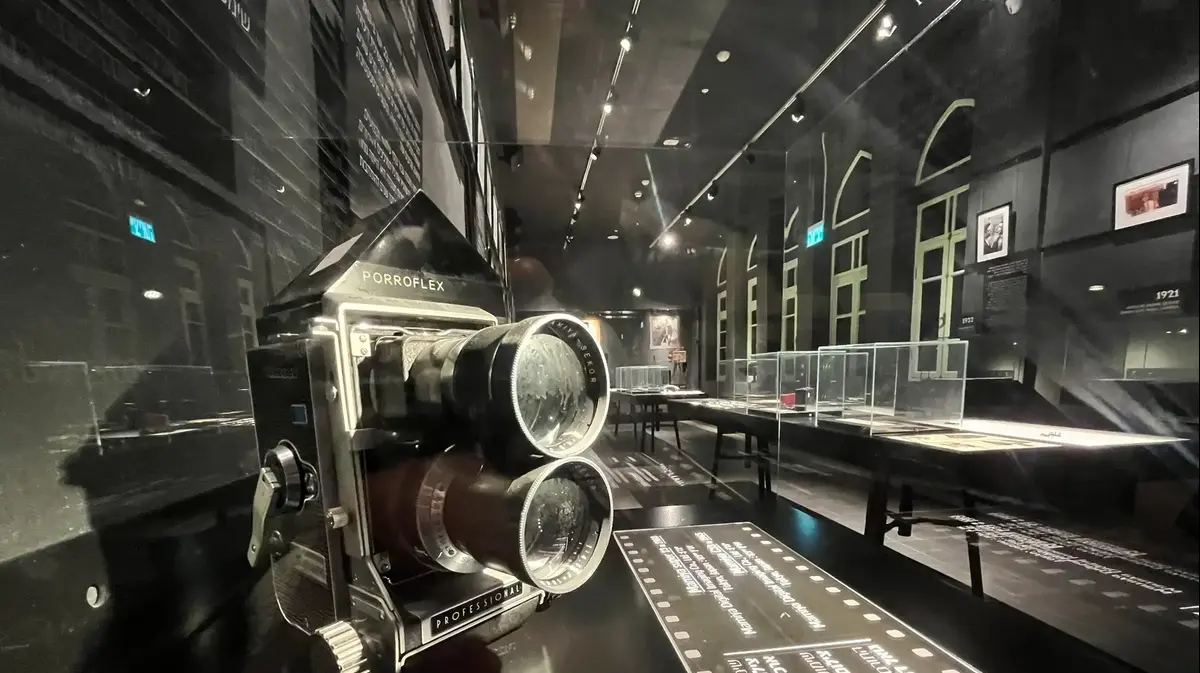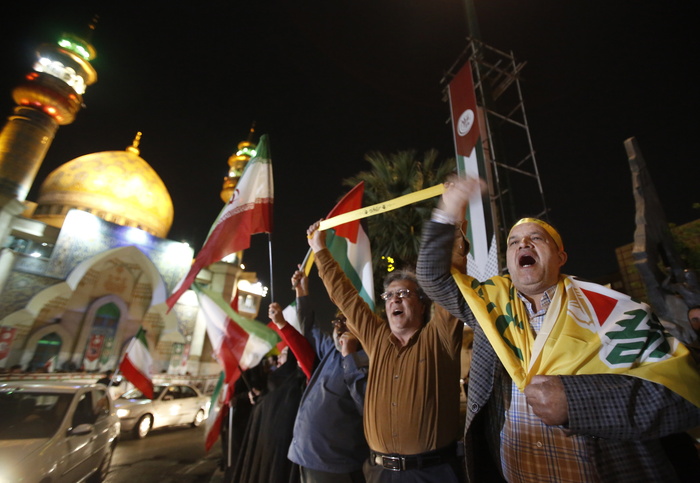The sight revealed to 21-year-old Ira "Ike" Shab when he boarded the ship "Dubin" on the morning of December 7, 1941, was terrifying.
A Japanese Zero fighter jet approached the ship with tremendous speed and rained incendiary fire in all directions.
To his right, Ira saw the warship "Utah" exploding and capsizing, and the warship "Rally" leaning on its side and raising heavy smoke.
He lay on the deck, praying he would not be harmed.
"I had a guardian angel," he tells us in a special interview.
"I have no other explanation for leaving this day unscathed."
80 years have passed since the day Japan landed a surprise attack on the US Navy base at Pearl Harbor in Hawaii, in the midst of World War II.
2,459 soldiers and civilians were killed in the attack, and 1,247 were wounded.
Twelve warships and 188 American planes were destroyed, and another 155 planes were damaged.
The United States immediately declared war on Japan.
Ira, 101, and with her the last survivors, are expected to attend the memorial event at Pearl Harbor next week, marking the 80th anniversary of the attack. At first, the Pearl Harbor Veterans Association numbered 70,000 members, but over the years they have dwindled. The last event, which took place two years ago, before the Corona, was attended by only 12 veterans. In fact, between the time of the conversation with Ira and the time the article was published, two more soldiers who had served on U.S. Navy ships during the attack - 99-year-old Stu Hadley and 98-year-old Tom Hay.
In his advanced age, and since the outbreak of the corona, Ira has rarely left the house, and spends his time mostly in virtual lectures on the attack.
"I never get tired of telling my story because it's important to keep the memory alive," he tells us in a zoom conversation from his daughter Kimberly's home in Hillsborough, Oregon, where he has lived for the past few years.
His memory is sharp, and so is his sense of humor.
"For me, the fact that I'm talking to a journalist from Israel is an attraction that does not fall short of the upcoming trip to Pearl Harbor. After all, I was already there."
"I never get tired of telling my story because it's important to keep the memory alive."
Ira "Ike" Shab, Photo: From YouTube
• • •
He was born in 1920 and grew up in Southern California.
"When he graduated from high school in 1939 - the end of the Great Depression in the United States - he was unable to find work, and decided to enlist in the Navy. Rally ". The band's role was to accompany the flag raising ceremony every morning and hold concerts for the sailors in the ship's dance hall.
“We got to Pearl Harbor in December 1940, and it was a refreshing novelty because the weather there was fantastic,” he recalls.
"On weekends we went to sea, and it was amazing. At the end of November 1941 I was transferred to 'Dubin', a destroyer aid ship, which was launched three years after the First World War and regularly accompanied the 'Rally'."
The fact that it was a smaller ship than the Rally may have saved Ira's life: the Japanese aimed most of the fire at the destroyers and warships.
"On Saturday night, the night before the attack, I spent time with club members at the base," he says.
"I participated in a competition between several military bands. The next morning I planned, as every Sunday, to play in a ceremony at the church on the ship. Then I hoped to meet my brother Allen, who also served in the Navy, at a liaison station on a nearby island. "A car, so I waited for him to come and visit. I also hoped that later in the day I could get off the ship and go play golf on a nearby course."
But by that time there were already six Japanese aircraft carriers on their way to the bay.
U.S. intelligence did not disclose the offensive plan, and it is still considered one of the greatest intelligence failures in U.S. history.
"The Japanese were an industrial and military power, and wanted their own empire in Southeast Asia to take over the natural resources they lacked," explains Dr. Emanuel Navon of the Tel Aviv University School of Government.
The U.S. had a significant presence in the Philippines, and the Japanese knew that hitting the Pearl Harbor fleet would greatly weaken the U.S.'s ability to respond. "
The idea for the attack, codenamed "Operation Z", was conceived by the commander of the Imperial Navy, Admiral Isuroku Yamamoto.
He set up a task force, which consisted of aircraft carriers and an air force of torpedo bombers and fighter jets.
The pilots trained during the summer of 1941 near the town of Kagoshima on Kyushu Island, whose topography and geography are similar to those of Pearl Harbor.
Among other things, the pilots trained in diving up to a height of only 7 meters for the purpose of dropping the torpedo bombs in the water.
"The fact that there was such a large concentration of ships at Pearl Harbor was very irresponsible," Navon says, "but no one believed anyone would do what the Japanese did."
On November 26, 1941, under wireless silence, six aircraft carriers left Hitokapu Bay on the island of Iturop, in the far north of Japan, en route to Pearl Harbor.
They carried on board 441 fighter jets.
Beside them sailed two fast battleships, two heavy cruisers, nine destroyers and 28 submarines, five of them dwarfs, designed to penetrate the bay itself and wreak havoc.
The first wave of attacks began on December 7 at 6:05 a.m., when 183 Japanese fighter jets took off toward the target.
After less than two hours, at 7:55, the lead pilot announced on the radio "Tora! Tora! Tora!"
- and a rain of fire fell on the American bases at Pearl Harbor.
• • •
"I remember the attack as if it took place today," Ira recalls.
"Seconds before, I got out of the shower and put on a clean uniform. I had just closed my locker when the alarm sounded at the base. Because it was an old ship, its public address system was actually a large pipe running along it, into which a commanding officer shouted.
"For the first few moments I thought the sounds of planes and explosions were an exercise. There were calls for firefighters and instructions to wait for further instructions, as was customary in the exercises. But after a few seconds all the crews were called to the battle positions. I was not a fighter, , But I decided to get on board to see what was going on.
"The sight was awful," he says, and the shock is evident in his voice even today.
"I saw the battleship 'Utah' hit by missiles, leaning on its side and capsizing. I raised my head up and saw the Japanese planes firing in all directions. I have never seen anything like it.
"Zero plane flew fast towards me, and I lay on the floor. I was scared to death. I joined the navy in peacetime, I did not assume I would find myself at war.
"I crawled back up the stairs and got off the deck. It was clear to me that I was not going to stand without doing anything while my friends were fighting for their lives.
"We saw nothing and did not know what was going on, but we worked at insane speed, carried the ammunition, and passed it through a window in the ceiling to the sailors who activated the weapons on board. It was very scary because we heard explosions from above and knew there was a reasonable chance we would die.
"For an hour and a half, I loaded boxes of shells of enormous weight. I weighed about 65 kg at the time, and I carried boxes that weighed around 120 kg. We had to lift the boxes horizontally, so that they would pass through the hatch."
Four of Dubin's crew members were killed in the attack, but fortunately for Ira, the Japanese pilots focused on the large battleships.
The battleship "Utah", which was close to "Dubin", was badly damaged and 58 of its crew were killed.
The "rally", which also anchored close, snatched a direct hit from a torpedo and tipped over on its side.
Her staff, with courage and resourcefulness, hurried to transfer much weight to the other side, preventing her from overturning.
Ira Shab, last in the right column, with the band that sang on the warship "Rally".
"Pearl Harbor was a refreshing novelty because the weather there was fantastic,"
The battleship "Arizona", which was on the other side of Ford Island, around which the ships docked, was hit by torpedo missiles that blew up its ammunition depots and sank.
1,177 crew members who were on it, about half of all those killed in the attack, were killed.
Many of them were trapped alive in the belly of the ship, unable to escape.
"I was in the front of the 'Dubin' when the 'Arizona' was hit," Ira says.
"I saw her flying in the air, then descending into the abyss. I only saw her cannons peeking over the surface of the water. There were bodies in the water, and everything around it was burning. It was a horrible sight, I felt like I was in hell."
"As a child, I remember Dad telling us that his only thought while picking up the ammunition crates was that he was going to ruin his own beautiful white uniform," says Kimberly Henriques, Ira's daughter.
"It was amazing to me. He didn't think about maybe dying, not about the ships exploding in front of his eyes, but about this trivial thing. That's what kept him going."
The destroyer aid ship "Dubin".
Apparently saved his life, Photo: From Wikipedia
• • •
The offensive ended after Admiral Chuichi Ngomo, who led the battle, decided to give up the third wave of the attack and withdraw his forces - a decision that turned out to be a mistake in retrospect, as the purpose of the third wave was to undermine naval rehabilitation capabilities and other vital factories.
The large fuel tanks in the port were not damaged in the attack, which allowed the Americans to return to operations in a relatively short time.
"I continued to load ammunition crates and move them upstairs, but slowly the sounds of the bombing subsided, and we began to realize that the attack was over. We still heard planes, but the explosions stopped. We went upstairs and saw a very hard picture. All were blue and beautiful, painted black because of the large amount of oil that leaked from the ships.
"I started treating the wounded on my ship. Luckily, I underwent basic training as a paramedic at the beginning of my service. I think I treated dozens of wounded."
When did you capture the dimensions of the disaster?
"At first we did not know who was injured, but very quickly the horrific picture became clear. It was like a horror movie. People tried to get survivors out of the ships. I lost friends and acquaintances, people who served by my side.
"We dealt with these sights in the only way we could - we occupied ourselves as much as possible, and prayed that the Japanese planes would not return. That day felt like an eternity. Needless to say I did not meet my brother that day. Only a few days later I received a sign of life The attack. "
• • •
Only the day after the attack did the sailors begin to recover from the disaster.
“The ships were still emitting heavy smoke,” Ira recalls, “and there was a lively movement of rescue forces, who continued to make desperate attempts to rescue trapped sailors from the upside-down ships.
"Every now and then I looked at the 'Arizona.'
"No one talked about his feelings, it was not such a time. We just worked as hard as we could. It was necessary to load ammunition on the ship again and repair the damage.
"I helped get bodies out of the water. Things no one is supposed to see, certainly not such a young person. We knew our friends were on the ships, and we might not get to them. It was a very difficult feeling."
Kimberly: "As a child, Dad did not talk at length about what happened in Pearl Harbor. It was a different generation, no one thought to stop and talk about the sights, the feelings after seeing such atrocities in front of their eyes. Only 15 years ago he started telling about everything. Over the years He accumulated so many repressed emotions, things he kept inside, but it was always clear that it hurt him.
"A few years ago I found a letter he sent to his mother, my grandmother, the day after the attack, on December 8. There were only a few dry words in it: 'I'm fine, I did not hear what about Allen.' alive.
"Since the war he has been to Hawaii many times, but until recent years he has not agreed to return to Pearl Harbor. He has not been able to."
Daughter, Kimberly Henriques,
• • •
Following the attack, President Franklin Roosevelt delivered one of the most groundbreaking speeches in U.S. history. "No matter how long it takes us to overcome this invasion, we will win," he said. Us again. "
On December 8, 1941, the United States, the Netherlands, and Britain declared war on Japan. Three days later, on December 11, Nazi Germany and Fascist Italy declared war on the United States.
Thus, more than two years after the outbreak of World War II, the United States was also dragged into the war.
"For the free world, and for Churchill in particular, the attack on Pearl Harbor was a gift from heaven," says Dr. Navon. Military, and hence also to the most powerful country in the world. "
Within a few months the Americans were able to rehabilitate their navy and embark on initial attacks against Japan.
In April 1942, ground bombers taking off from aircraft carriers attacked Tokyo as part of the so-called "Dolittle raid."
A month later began the "Battle of the Coral Sea," the first naval battle in which aircraft carriers fought each other using aircraft.
Ira was then playing on one of the ships that accompanied the aircraft carriers.
Ira continued his military service in the Pacific sector throughout World War II.
Towards the end of the war the ship on which he served returned to the U.S. to re-equip and load new sailors. "I was playing a concert in front of officers at a training camp in New York State, and suddenly someone came in and shouted, 'War is over, war is over!' Dance".
He remained in the Navy until 1947, after which he was discharged and studied aeronautical engineering.
He later served as a civil engineer on a missile ship and worked for General Dynamics.
In the late 1960s, he was a member of General Dynamics' relief team for the Apollo project.
"In the Apollo 8 program, I memorized the entire operation - from the takeoff to the moon, to the mission of the spacecraft around the moon. In 1969, I was in the Indian Ocean, in a team that collected astronauts returning from the moon in Apollo 11."
In 1986, Ira retired.
• • •
On December 7, 2019, a particularly moving ceremony was held at Pearl Harbor.
U.S. Navy divers dived into the remains of the battleship "Arizona" and buried there the ashes of Lauren Brunner, the ship's last survivor, who died at the age of 98.
That same day, Ira visited Pearl Harbor for the second time since the attack, and went up for the first time to the memorial site above Arizona.
"I have not been able to get on it before," he admits.
"When I did it in 2019, emotions flooded me. I cried uncontrollably."
Now, on the eve of the 80th anniversary of the attack, his children wanted to bring him to Pearl Harbor again.
But this time the journey is not simple.
The corona plague, along with the fact that Ira needed close guidance and assistance, made the challenge bigger than ever.
Kimberly launched a mass recruitment campaign to do so, and in late October wrote on her Facebook account that "due to corona restrictions only one participant from each family can be present at ceremonies, and groups taking discharged soldiers should limit the number of caregivers. Dad needs two caregivers and round-the-clock attention. "His hearing and memory are not what they were the first time he visited Pearl Harbor. We need your help to bring him to Hawaii on this important anniversary."
The masses agreed, and within ten days Kimberly was able to raise a little more than the amount she requested, $ 8,800.
"I'm honored to help you get there," wrote a donor named Jack, while another donor, James, donated $ 101, one dollar for each year of Ira's life.
"The people who served in World War II are real heroes," he noted.
"With everything going on because of the corona, I did not expect people to do something like that," Kimberly told us this week.
"It's touching. As for my dad, he's going back to Pearl Harbor both for himself and as a representative of something bigger, which is slowly disappearing.
"For years, he used to meet with his bandmates. They didn't have to talk, they were just there for each other. It helped them cope. In recent years, Dad thought he was the last of them alive. But thanks to the campaign we were able to find a bandmate, "He appeared on one of the ships on that fateful day. We are preparing a surprise for him and we will meet them at a concert to be held there."
Ira himself felt lucky.
"It's amazing to be still alive, when so many of my friends have already passed away," he says.
"I lost a lot of friends at Pearl Harbor. We were all very close, even closer than brothers. I feel obligated to go back to Arizona, see the names of the dead, remember what we did together and tell the story to future generations.
"You know, from Pearl Harbor, and also from other battles in the war, I came out without a scratch. During all my military service I was not injured. Apparently there is someone guarding me."
hanangreenwood@gmail.com
Were we wrong?
Fixed!
If you found an error in the article, we'll be happy for you to share it with us

